If you’re an OG PC gamer you probably recall the neverending holy wars over console gamepads vs. PC-style mouse and keyboard setups. While the mouse and keyboard, with their fast turning and accurate aim, did have lots of benefits, one advantage only gamepads could offer was true analogue character movement via analogue sticks. Oof, those console kids had a point, and that simply couldn’t stand. Enter a rare beast: analogue keyboards.
The $US175 ($243) Wooting 60HE is an “analogue mechanical keyboard” that looks a lot like a typical (though compact) gaming keyboard, with RGB lighting, a detachable USB-C cable, and all the usual trim. It’s that small word, “analogue,” that sets it apart from the pack. Just as with the analogue stick on an Xbox controller, every key on the Wooting 60HE can sense exactly how hard you’re pressing it. So in a supported game, you can delicately press the W key to creep along stealthily or jam it down to hit your full stride, just like in a console game. Its analogue nature also leads to other unique benefits, like setting multiple binds per key.
I went into my tests of the Wooting 60HE expecting to focus solely on how it could augment the experience of competitive multiplayer games. Such is the value proposition of this device, with its solid build quality, per-key adjustable actuation points, and a variety of software-defined custom functions that make an undeniable difference in sweaty, competitive scenarios. It more than excels in this area. But what I didn’t expect was for the 60HE to improve single-player games in such a way as to encourage me to game more often on mouse and keyboard, even in PC games I usually default to a gamepad for. The 60HE has changed how I’m gaming.
In fact, I’ll take a moment to use a word I’m not fond of, but I think I can demonstrate in this review. The Wooting is making PC gaming more immersive for me.
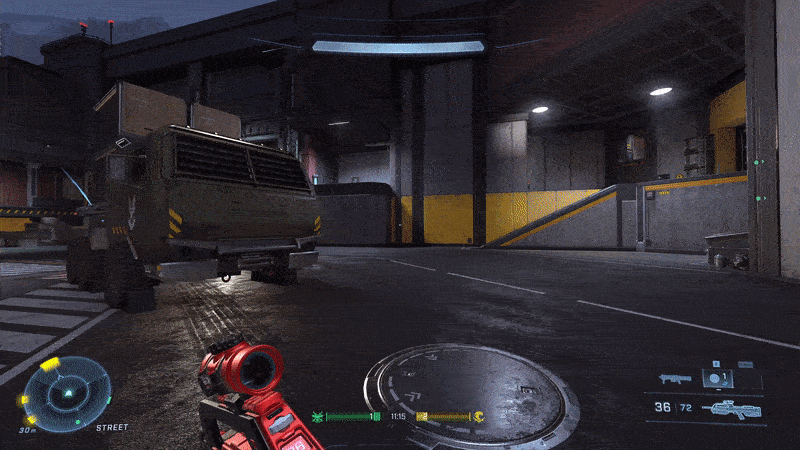
A Real Competitive Advantage?
I focused my multiplayer testing on two shooters I know very, very well, games for which I’ve long since developed a solid understanding and reliable muscle memory. In other words, if this keyboard makes any appreciable difference in a competitive video game, these are the ones in which I’d be able to spot the improvements most clearly.
Halo Infinite and Rainbow Six Siege are my bread-and-butter shooters. I simply adore these games and they inspire me to get better in competitive scenarios. I’ve been playing Halo for over 20 years at this point, and Siege has been a staple for the past six or so. Halo is wired into my neurons, and Siege was one of the first games I got into on PC; its destructible environments have been the scene of many long nights of violent gaming with dear friends. So, if the Wooting 60HE makes any difference, these would be the games in which I’d be able to tell. I don’t think I was prepared for how immediate the difference was.
Let’s start with its custom actuation points. “Actuation point” merely refers to what physical distance a key must travel downward before the hardware recognises an input. And the Wooting 60HE has a remarkable advantage here in that it uses analogue switches through the magic of magnets, meaning, you can, in the accompanying “Wootility” software, tell the key switches where and when to send a signal on a down press, at any depth from 0.1mm to 4.0mm.
In Siege, I adjusted my movement keys’ actuation points to have just 0.1mm of travel; when I noticed how lightning-fast my keyboard strokes translated to onscreen movement, I literally laughed. I think the words that emerged were, “Whoa, what the fuck, this is fucking sick. What the fuck?” It was the same kind of thrill you get when you upgrade to a better GPU and test out a previously demanding game, only to see it suddenly explode to life at higher framerates.
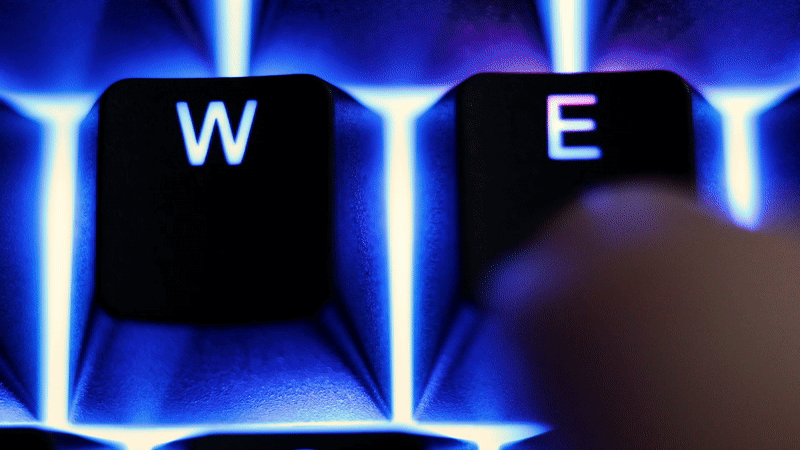
This had tremendous potential in both Siege and Halo. I was able to set my primary movement keys, WASD, crouch, and jump (vault, in Siege) to the fastest-possible actuation points. In Siege, I could start moving in an instant. Is that a Fuze charge I’m hearing? Time to insta-get-the-fuck-out of there. Turn a corner and spot Clash? (groans) Same, while appreciating that enhanced sense of responsiveness every step of the way.
I could also stop on a dime. The magnetic, analogue function means that the keyboard can know instantly when the key is heading in the other direction, and in that precise millisecond end the signal (or trigger another key you set in the Wootility software as it returns to the default position). Enter a room and spot a Frost trap in Siege? I can stop instantly. Is that a Kapkan trap? Hit the brakes. I can keep moving to the last possible second of a Lion radar pulse and stop just before I give my position away.
And in Halo, I could deftly dance from side-to-side in showdowns with the Battle Rifle like never before. The idea of having to fiddle with an analogue stick instead of just tapping keys to accomplish the same nuanced spacing adjustment now feels like a joke. And in Halo particularly, my jumps never felt more reflexive. This newly responsive input made the otherwise shallow Big Team Battle mode and vehicle-based maps in general more fun by letting me respond toe-to-toe with warthogs and ghosts that otherwise outmaneuver me on foot. It’s never been easier to pull off the more subtle nuances of the game’s movement vocabulary, such as curb sliding. I even started to finally get the hang of snap sliding, which I thought I’d never wrap my head around.
One of Halo Infinite’s more interesting additions to the classic formula is the ability to drop your weapon. This results in a faster animation switch to your secondary gun. On controller the default is to hold the Y button, and I haven’t found a good alternative mapping, so it’s hard to actually use this function as intended. On the Wooting I mapped it to Right Alt and reduced the actuation point to .1mm. Stripping shields with plasma weapons only to basically nudge the Alt key with my thumb to switch to a precision weapon and land a headshot — and hear the “Hold This” medal pop over and over again — actually had me afraid I was going to somehow trip anti-cheat.
[review heading=”Wooting 60HE Analogue Mechanical Keyboard” image=”https://www.kotaku.com.au/wp-content/uploads/sites/3/2022/08/28/4d3392931cc036df4913d83984873649.jpg” label1=”BACK OF THE BOX QUOTE” description1=”“This keyboard’s fulla magnets, brah.”” label2=”TYPE OF DEVICE” description2=”Keyboard” label3=”LIKED” description3=” Powerfully customisable and noticeable improvements in multiplayer and single-player games.” label4=”DISLIKED” description4=”Not every game supports the unique features of this keyboard.” label5=”MANUFACTURER” description5=”Wooting” label6=”PLATFORMS” description6=”PC (consoles can mostly just use its standard digital features)” label7=”RELEASE DATE” description7=”Next batch is available for pre-order.” label8=”PLAYED” description8=”Dozens of hours of Halo Infinite, Rainbow Six Siege, Hitman 2, Death Stranding, and Cyberpunk 2077 to name a few.” ]
Faster response times weren’t the only advantage of adjustable actuation points: I could set problem keys that I accidentally hit sometimes at a deeper actuation point, say 1mm rather than .1mm. Accidental grenade throws in Siege — you wouldn’t believe how often chill nights of casual Siege get interrupted by sudden shouts of “whoa get the fuck back get the fuck back” when someone hits “grenade” instead of “melee” — or premature firings of the equipment in Halo became substantially less frequent. This has an obvious competitive advantage, but it also made casual play more fun.
Response time is so remarkably improved and customisable to layouts you prefer that this keyboard and its software offer more than just improved response times, they let you customise it to how you play and what makes the most sense to you. You can also use custom functions and binds to come up with control layouts that are otherwise impossible on regular, digital switches.
For example, you can tell the keys to fire different commands at different press depths. Want to set the C key to crouch with a tap but go prone when you hold it? Easy. That frees the Ctrl key to map to something else. You could even have it trigger the Shift key when you press W down far enough, letting you auto-sprint with a full press. The software lets you set up to four different commands at four different heights per key.
The Wootility software also allows you to enable “Tachyon mode” which aims to deliver a fast-as-possible 1ms input response times by sacrificing the actuation point feature and what Wooting describes as the “useless” RGB lighting effects. Thank god someone’s honest about all this Christmas tree bullshit. That said, I haven’t been able to notice any response differences in “Tachyon mode,” and prefer to retain the actuation point functionality. Perhaps more diehard, sweaty players could notice an improvement.
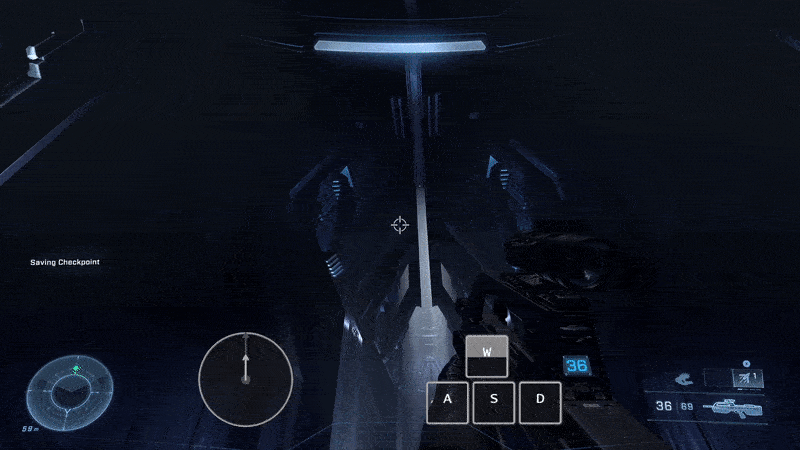
Walk Slow, You Deserve It
The competitive advantages of the 60HE’s analogue keys is obvious, and I felt it immediately in games I regularly play.
But I also mentioned that this keyboard increased my immersion. I really enjoyed how nuanced, slower movements that usually require an analogue stick were suddenly open to me with a mouse and keyboard. I’m talking about slow-walking up to the final boss because the weight of the moment demands it, driving at slower speeds in open-world games to listen to an NPC monologue, or casually exploring environments by gently nudging the stick to take in the ambience. That’s the type of immersion that mouse and keyboard users usually have to give up for the other advantages they enjoy.
I tested this out on Hitman 2, a game in which having variable-speed movement can make a serious difference. I could gently press the W key to move forward slowly and softly, and then push it further when I was at risk of being spotted. In Death Stranding, I was able to move through Mule camps and BT zones with the same delicate touch I enjoy on a controller. Survival horror, also, can theoretically benefit from this, but as I tested out Resident Evil 2 and 3, a limitation became apparent. Not every game plays nice with how the Wooting transmits its analogue input.
The Wooting 60HE functions by spoofing gamepad inputs, making the computer think that the W key, for example, represents a forward press of an analogue stick or trigger pull.
Some games, which demand you only use a mouse + keyboard or a gamepad — never both at once — will thus not work with the 60HE’s gamepad emulation features. In those Resident Evil games, for example, I would slowly walk into a room to find I couldn’t look around with my mouse; that’s because the game had switched over to its gamepad-exclusive mode. As my mouse and the keyboard’s gamepad emulation fought for dominance, HUD elements and button prompts would rapidly flash between gamepad buttons and keyboard keys. (Some games, though not nearly enough, let you force the display of just one or the other type of button prompts.)
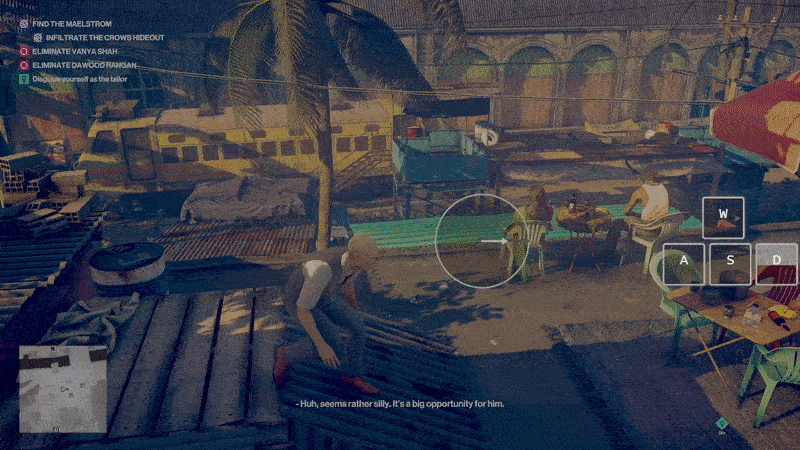
And while having the ability to map an analogue key to an analogue function like a trigger or stick is nice, you will likely have to spend some time customising the response curve to what feels right. In general, using analogue switches for analogue functions is a little challenging to get used to, but I think that’s just a matter of developing new muscle memory for gently pressing keys. We’re likely all just used to bottoming keys out as a matter of course.
In order for analogue movement to work as intended, a game has to support simultaneous input from both keyboard + mouse commands and gamepad commands at the same time. Fans of Valve’s Steam Controller are likely familiar with this dilemma, as it often prevented taking full advantage of that controller’s superior versatility. It’s also a problem with Valve’s more recent Steam Deck.
My beloved Rainbow Six Siege turned out to be another problem game that disliked simultaneous input. In theory, the 60HE’s analogue keys could let my character move at any precise speed I wanted. However, when I did this, I could no longer shoot with a mouse click, since the game was in “gamepad mode” and expected a right-trigger pull rather than a mouse button. (If analogue movement had worked as I hoped, I suspect it would’ve given me such an in-game advantage that Ubisoft might’ve personally showed up at my door to take this keyboard away from me.)

You can peruse the list of games that support simultaneous input on the PC Gaming Wiki, but fair warning: Some of the games listed there don’t actually support it, or might require some precise option settings I was unable to discover. Resident Evil 2 and 3 were unfortunately two of these, as was Marvel’s Spider-Man Remastered.
I was able to, however, jump into Halo Infinite’s campaign and slow-walk around the ancient Forerunner environments in a way that let me enjoy it as a theatrical experience. I even got into a boss fight in which gentle movements around corners made the experience feel more immersive. I know, that word again, but I can’t explain it any other way. Perhaps this isn’t the best feature for hyper-hard difficulties in which you might need to boil everything down to binary, on-off movement inputs, but it made the game more fun.
When everything goes well and the 60HE works as promised, I love it. It feels like the best of all worlds. I get the precision aiming of a mouse, the quick access to commands under all of my fingers, and gamepad-style analogue movement.
It also suggests that the retreat back to digital-only buttons on gamepads over the last two decades might’ve been a net loss. Hardware manufacturers should reconsider how analogue input can result in a higher-quality game experience, and game developers should stop needlessly limiting games by insisting they only support one input type at a time.
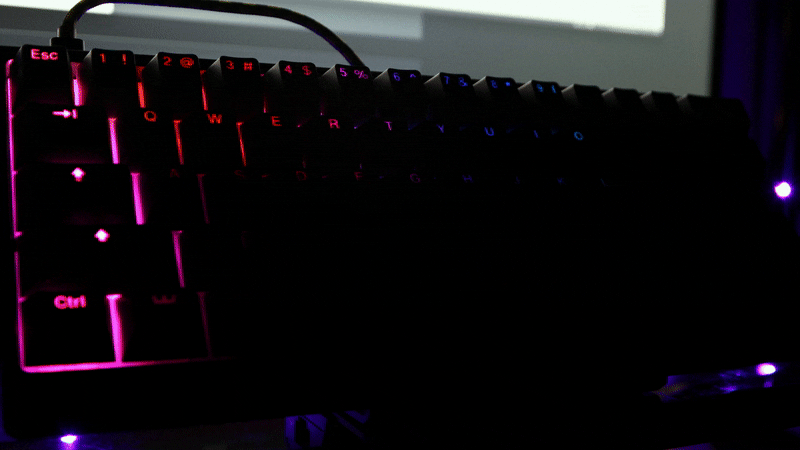
A Solid Productivity Device, With Some Caveats
While the Wooting 60HE is a wonderful mechanical keyboard and very enjoyable to game on, it hasn’t replaced my trusty System76 Launch for daily work and productivity tasks, for a few reasons.
The Wooting 60HE is a compact, 60% layout keyboard, which means no dedicated f-row, no arrow keys, no home key, no delete key. Yes, the software lets you map keys to whatever you like, but there are only so many to go around before you have to resort to the second or third “function layers,” — a concept familiar to users of other compact-layout keyboards — which you can switch to by holding a certain key. When it comes to work, I really need at least a 75% layout. Also, my System76 Launch has a split space bar that lets its left half act as backspace. As a writer, this is too handy to give up. These are strictly “me issues,” however. Others may find a 60% layout more agreeable as a daily driver.
And while the mechanical “Lekker” switches from Wooting are really nice to type on and sound great — they offer an audible-enough linear press and lack a tactile bump or click — they were a bit too stiff a typing experience for me. Again, a me problem. Not an issue at all for gaming and, if I really wanted, I could order the lower-tension springs from Wooting, crack open the switches, and replace them all. This leads to another beautiful thing about this keyboard: It’s surprisingly moddable.
The case that the plate and switches sit in, for example, can be swapped. A couple of screws and you can put the guts in a more expensive, aluminium case. I found the plastic case the Wooting ships in to be more than serviceable, but if you’re into something like a Tofu aluminium, well, you can pop the 60HE’s guts right in there and have an even better keyboard than what you’d get out of the box. (Also, the 60HE’s yellow wristband, which some may find an eyesore, is purely optional.)
You can’t customise the plate or the analogue switches, though. But why would you? They’re central to what makes this thing great. (The switches are lube-able, however.) This is a perfectly customisable device and can be improved. And it costs under $US200 ($278). How even.
The Wooting 60HE lives up to all the competitive promises it makes of low input latency, adjustable actuation levels at a per-key level, and custom functions that will let you do everything but dodge bullets in your competitive game of choice. Its analogue movement function, though limited by the support that needs to come from game developers enabling simultaneous input, allows for richer, more immersive gameplay experiences. The $US175 ($243) price point feels surprisingly reasonable for something built so well, and you can mod it to a degree that matches many purely custom keyboards.
With its impressively well-built, moddable, and maintainable hardware, the Wooting 60HE is well worth the cost. Every critique I’ve considered is well balanced by its advantages as a physical device and as a novel input device. And though there are other analogue keyboards out there, not all of them check all the boxes of the Wooting, which include killer, trouble-free software and high levels of customisation in both software and hardware. It arguably sets a standard for other specialty keyboard manufacturers to match. And I wish them luck, because Wooting clearly knows what it’s doing.
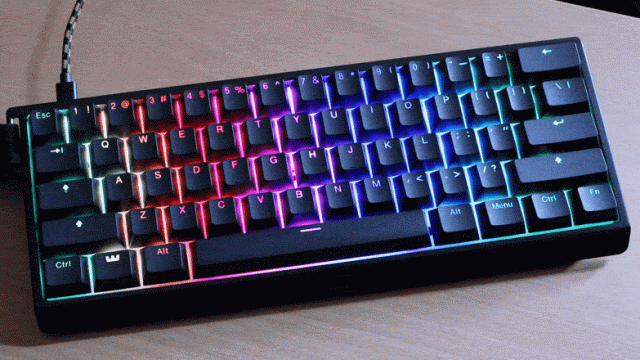
Leave a Reply